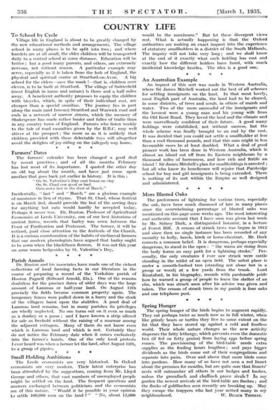More Blasted Oaks
The preferences of lightning for various trees, especially the oak, have been much discussed of late in many places since the overwhelming percentage of blasted oaks was mentioned on this page some weeks ago. The most interesting and authentic account that I have seen was given last week by Mr. Sidney Dark, a distinguished botanist, in a lecture at Forest Hill. A census of struck trees was begun in 1912 and since then no single instance has been recorded of any casualty to holly, beech, birch or horse-chestnut. Mr. Dark corrects a common belief. It is dangerous, perhaps especially dangerous, to stand in the open : " the warm air rising from the body forms an easy path for a lightning stroke." Per- sonally, the only creatures I ever saw struck were cattle standing in the midst of an open field. The safest place is under a smooth-barked tree (standing not alone but in a group or wood) at a few yards from the trunk. Lord Knutsford, in his biography, records with pardonable pride how he warned a group of people to leave the shelter of an elm, which was struck soon after his advice was given and taken. The census of struck trees in my parish is four oaks and one telephone post.


























































 Previous page
Previous page